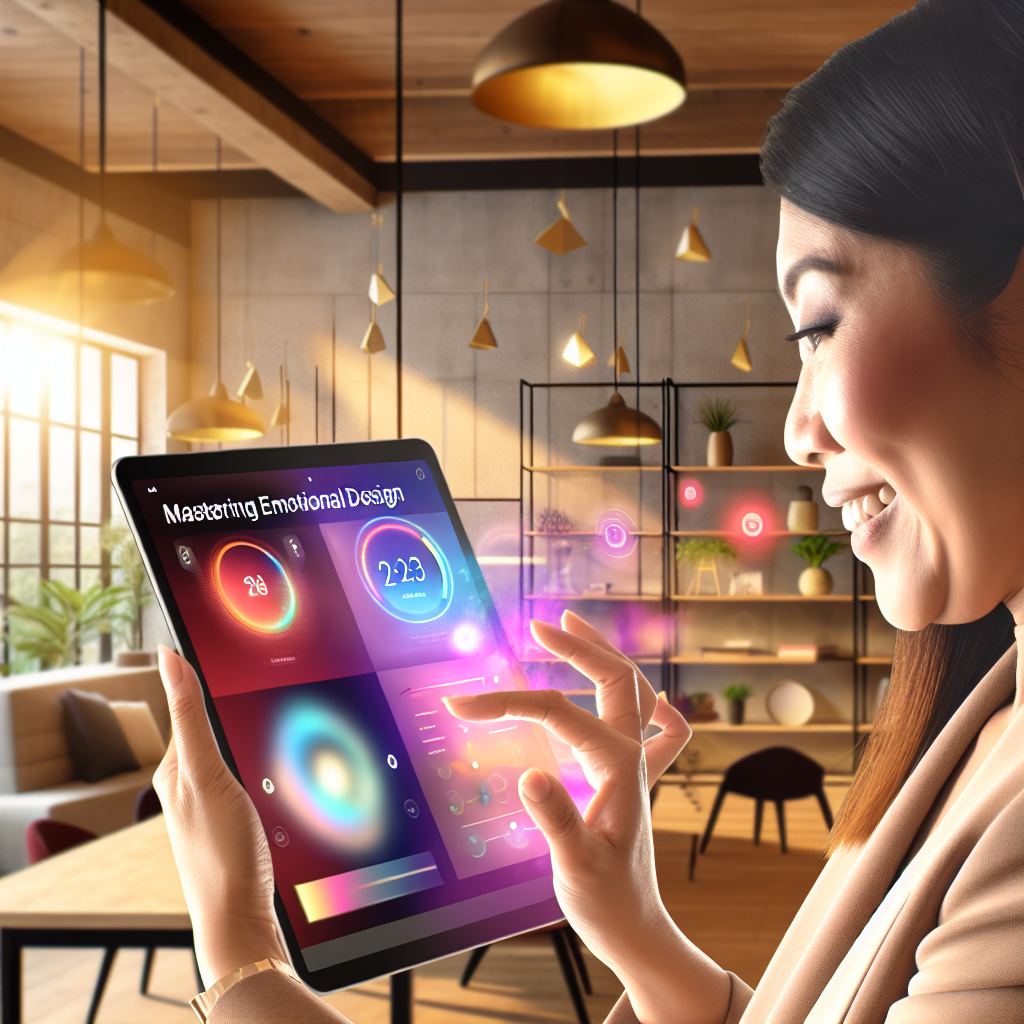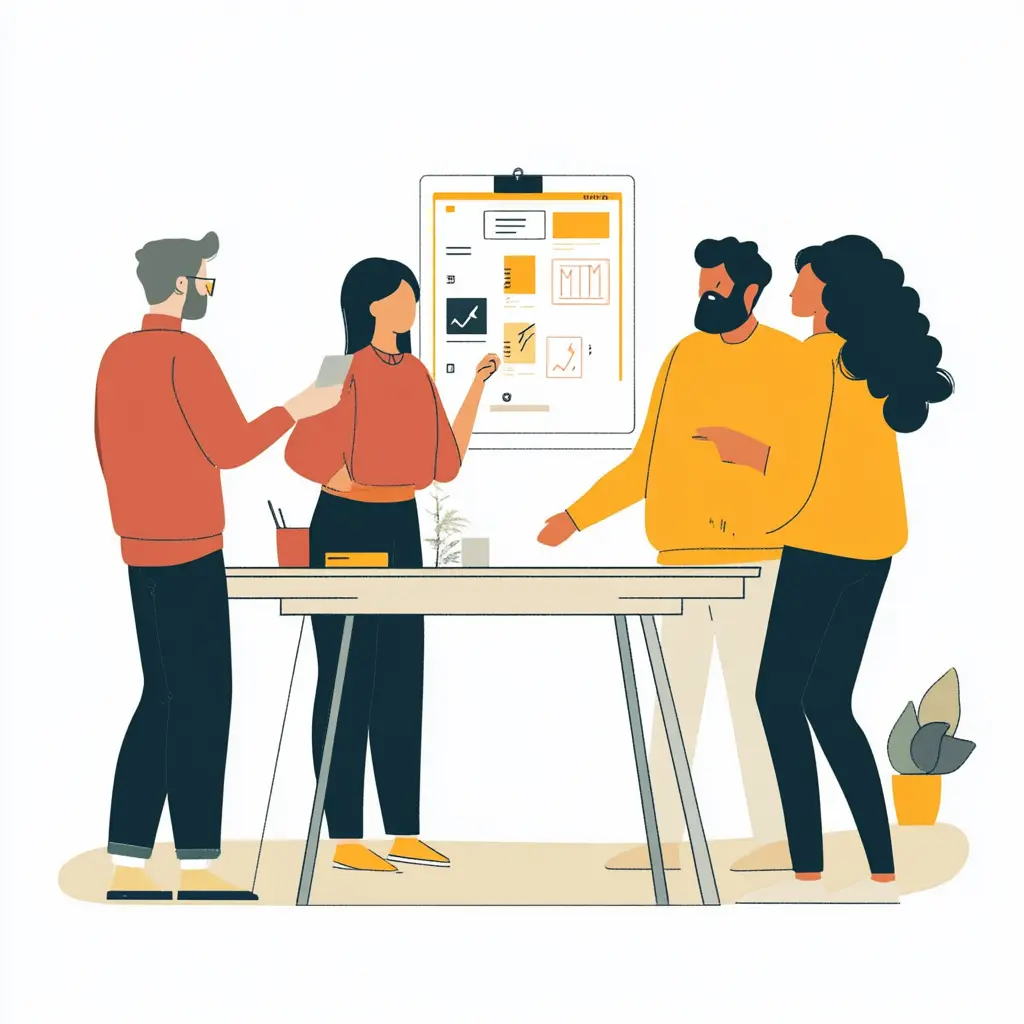Emotional design is integral to shaping a user’s experience by tapping into their emotions. Incorporating emotional design is a powerful tool that can significantly enhance user engagement and satisfaction, turning users into loyal advocates.
What is Emotional Design?
Emotional design refers to the method of creating products that evoke positive emotions, making users feel happy, satisfied, and engaged. It involves designing with the user’s feelings and experiences in mind. By focusing on aesthetics, functionality, and usability, designers can create a more emotionally engaging user experience.
The Three Levels of Emotional Design
Renowned cognitive scientist Don Norman outlines three levels of emotional design: Visceral, Behavioral, and Reflective.
- Visceral Design: This focuses on initial impressions. Elements such as color, shape, and texture play vital roles. A visually appealing interface can grab the user’s attention instantly.
- Behavioral Design: This level emphasizes usability and functionality. A product that performs well and is easy to use will enhance the user’s experience and evoke positive emotions.
- Reflective Design: This pertains to the user’s overall reflection on the product after using it. A product that connects with users on a deeper level has the power to influence their thoughts and emotions.
Why Emotional Design Matters
Emotional design matters because it goes beyond functionality to create connections and build trust. Users are more likely to engage with and return to products that they feel emotionally attached to. Hence, emotional design can lead to higher user retention and satisfaction rates.
Strategies for Implementing Emotional Design
Understanding and implementing emotional design involves various strategies:
- User Research: Conduct thorough research to understand your users’ needs, preferences, and pain points.
- Storytelling: Use narratives to create an emotional connection with users. This can make the product more relatable and memorable.
- Visual Appeal: Focus on design elements that evoke positive emotional reactions. Color schemes, typography, and images play significant roles.
- Personalization: Offer personalized experiences that make users feel valued and understood.
- Microinteractions: Small, subtle interactions like animations or sound effects can elicit positive emotions and make the experience more enjoyable.
Examples of Emotional Design in Action
Successful products often incorporate emotional design elements. Here are some renowned examples:
- Apple: Known for its sleek, intuitive design, Apple products create a strong emotional bond with users through their aesthetic appeal and seamless functionality.
- Airbnb: Through personalized recommendations and engaging visuals, Airbnb provides an emotional experience that makes users feel welcomed and excited about their travels.
- Slack: By integrating playful animations and a friendly tone, Slack makes communicating and collaborating a more enjoyable experience.
How to Measure Success in Emotional Design
Measuring the success of emotional design can be challenging, but key metrics include:
- User Feedback: Conduct surveys and interviews to gather qualitative data on user feelings and satisfaction.
- Engagement Metrics: Track user engagement, time spent on the application, and repeat visits to gauge emotional connection.
- Net Promoter Score (NPS): Measure user loyalty and satisfaction through NPS surveys.
FAQs
How can emotional design impact user behavior?
Emotional design can influence user behavior by creating an engaging and intuitive experience. Users are more likely to interact with and recommend a product that they have an emotional connection with, leading to increased usage and loyalty.
What are common pitfalls to avoid in emotional design?
Common pitfalls include overcomplicating design elements, ignoring user feedback, and neglecting the importance of functionality. It is essential to strike a balance between aesthetics and usability to ensure a positive emotional experience.
For more insights on the latest trends in design and user experience, visit our blog.
Emotional Design: The Science of Evoking Emotions
Fun Fact
Did you know that emotional design can make a product 20% more appealing to users? This is because it taps into our emotions, making us feel more connected and engaged with the product.
Good to Know
Emotional design involves three levels: visceral, behavioral, and reflective. The visceral level is about immediate reactions to how something looks and feels, the behavioral level focuses on usability, and the reflective level involves thinking about and interpreting the design, affecting emotions.
By understanding and applying these levels, designers can create products that not only function well but also evoke emotions, making them more memorable and enjoyable to use.
Emotional design is not just about aesthetics; it’s about crafting a user experience that resonates with users on a deeper level, fostering a sense of connection and loyalty.
So, the next time you use a product, think about how its design makes you feel. Is it visually appealing? Is it easy to use? Does it evoke emotions that make you want to come back to it?
By incorporating emotional design principles, designers can create products that not only meet functional needs but also delight and inspire users.





